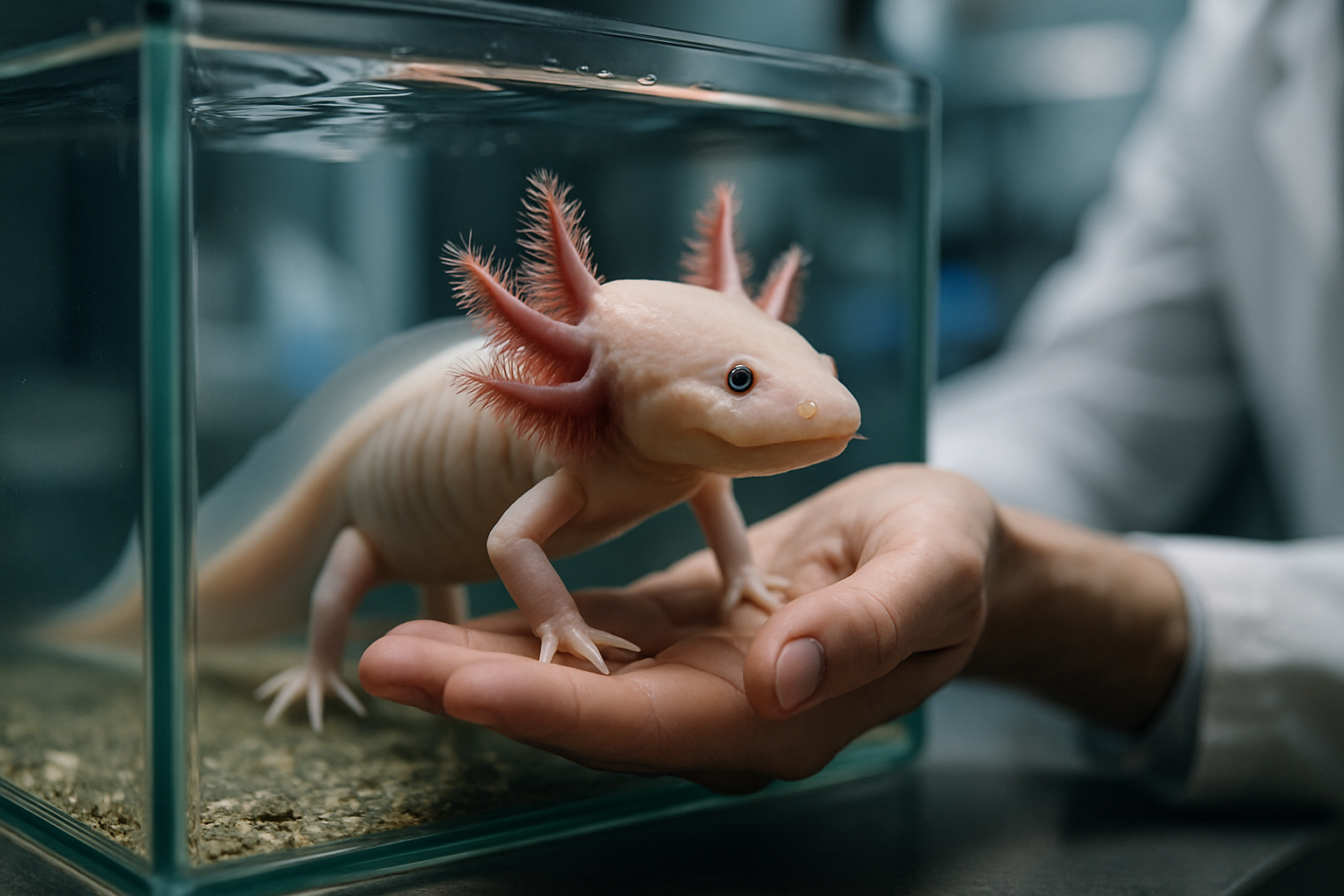Exploring the Enigmatic World of Axolotls
The peculiar, almost alien-like appearance of axolotls has captivated scientists and animal enthusiasts alike for centuries. These unique amphibians, native to Mexico, possess an extraordinary ability to regenerate lost body parts, making them a subject of intense scientific study. From their fascinating evolutionary history to their current conservation status, axolotls continue to surprise and intrigue researchers around the globe.

The Unique Biology of Axolotls
Axolotls are neotenic salamanders, meaning they retain juvenile features throughout their lives. This includes their external gills, which give them their distinctive, frilled appearance. These gills allow axolotls to remain fully aquatic throughout their lives, unlike most other salamander species that eventually develop lungs and move onto land.
One of the most remarkable features of axolotls is their ability to regenerate lost body parts. This includes not only limbs and tails but also parts of their brain, heart, and other organs. This regenerative capacity has made axolotls a valuable model organism for scientific research, particularly in the fields of regenerative medicine and evolutionary biology.
Natural Habitat and Conservation Status
In the wild, axolotls are found only in the complex system of canals and lakes in the Valley of Mexico, primarily in the remnants of Lake Xochimilco. However, urbanization, pollution, and the introduction of invasive species have severely threatened their natural habitat. As a result, wild axolotls are now critically endangered, with some estimates suggesting that fewer than 1,000 individuals remain in their natural environment.
Conservation efforts are underway to protect the remaining wild populations and their habitat. These include initiatives to improve water quality in Lake Xochimilco, remove invasive species, and establish protected areas for axolotls to breed and thrive.
The Rise of Axolotls as Exotic Pets
Despite their endangered status in the wild, axolotls have become increasingly popular as exotic pets. Their unique appearance, relatively easy care requirements, and fascinating regenerative abilities have contributed to their appeal among aquarium enthusiasts.
Axolotls in the pet trade are typically captive-bred, which helps to alleviate pressure on wild populations. However, it’s crucial for potential owners to understand the specific care requirements of these unique amphibians. Axolotls require cool, clean water, a spacious aquarium, and a diet primarily consisting of live or frozen foods.
Scientific Research and Medical Applications
The axolotl’s remarkable regenerative abilities have made it a subject of intense scientific interest. Researchers are studying the molecular mechanisms behind their regeneration in hopes of developing new therapies for human injuries and degenerative diseases.
One area of particular interest is the axolotl’s ability to regenerate its spinal cord after injury. Scientists are investigating how this process occurs at the cellular and molecular level, with the hope of eventually applying this knowledge to treat spinal cord injuries in humans.
Challenges and Future Prospects
While axolotls face significant challenges in their natural habitat, their popularity in scientific research and the pet trade has ensured their survival in captivity. However, this situation raises important questions about conservation ethics and the relationship between ex-situ conservation (preservation outside natural habitats) and in-situ conservation (preservation within natural habitats).
As research continues and our understanding of axolotl biology deepens, there is hope that we may not only learn valuable lessons for human medicine but also develop more effective strategies for conserving these remarkable creatures in their natural environment.
Conclusion
Axolotls represent a fascinating intersection of evolutionary biology, regenerative medicine, and conservation biology. Their unique characteristics and the challenges they face in the wild make them a compelling subject for both scientific study and public interest. As we continue to unlock the secrets of these enigmatic amphibians, we may well find that they hold the key to groundbreaking advancements in medical science while also serving as powerful ambassadors for conservation efforts worldwide.





